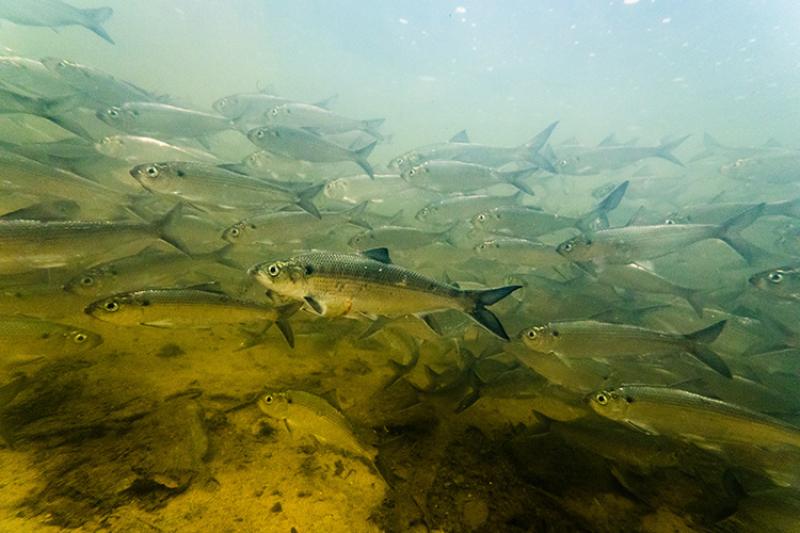In 2018, NOAA and partners removed Bloede Dam from the Patapsco River, opening up miles of free-flowing habitat to migratory species. A recent study has shown river herring are using the habitat upstream of the former dam. This news highlights the importance of dam removals in NOAA’s work to support migratory fish.
NOAA and partners have been monitoring the Bloede Dam site since before its removal to see how reopening the river would affect fish migration. Scientists at the Smithsonian Environmental Research Center and the University of Maryland Center for Environmental Science have been using environmental DNA, or eDNA, to monitor for the presence of river herring. Fish and wildlife constantly shed scales, tissue, and other bits of genetic material into the surrounding environment. Researchers can collect a water sample, analyze the eDNA found in it, and identify which species have recently visited a location.
A recent study published in PLOS ONE found eDNA evidence of alewife and blueback herring (collectively known as river herring) using the reopened habitat. In the 4 years prior to the dam removal, no river herring eDNA was detected upstream of the Bloede Dam site. After its removal, eDNA from both species was detected in the reopened habitat. The likelihood of detecting the eDNA of alewife upstream of the Bloede Dam site increased from 0 to 5 percent, and from 0 to 13 percent for blueback herring. In addition to eDNA evidence, biologists with the Maryland Department of Natural Resources recorded two adult river herring—one alewife and one blueback herring—upstream of the Bloede Dam site in 2021.
Reopening the Patapsco River
For more than a century, Bloede Dam served as the first barrier that fish encountered on the Patapsco River when migrating up from the Chesapeake Bay. The derelict dam had also been a serious public safety hazard for decades.
Working alongside American Rivers and an array of other partners, NOAA invested more than $9.3 million in the effort to remove the structure and conduct monitoring at the site. Additional funding came from partners including:
- Maryland Department of Natural Resources
- National Fish and Wildlife Foundation
- U.S. Fish and Wildlife Service
- Coca Cola Foundation
- Keurig-Green Mountain
Previous NOAA-supported projects helped remove Union Dam and Simkins Dam from further upstream in 2010. Together, the removal of these three dams reopened more than 65 miles of habitat for blueback herring, alewife, American shad, and hickory shad, and more than 183 miles for American eel.
Fish Passage and NOAA
Every year, millions of fish migrate to their spawning and rearing habitats to reproduce. They are often blocked from completing their journey by barriers like dams and culverts. When fish can’t reach their habitat, they can’t reproduce and maintain or grow their populations. As a result, many fish populations have declined. NOAA works to reopen these migratory pathways, restoring access to healthy habitat for fish.
NOAA’s Office of Habitat Conservation has a long history conducting fish passage and other habitat restoration efforts, with large-scale competitive funding opportunities and expert technical assistance. Through our Community-based Restoration Program, we have opened up more than 4,400 miles of streams and rivers to fish migration. In December 2022, we announced funding for 36 new fish passage projects across the country under the Bipartisan Infrastructure Law.



